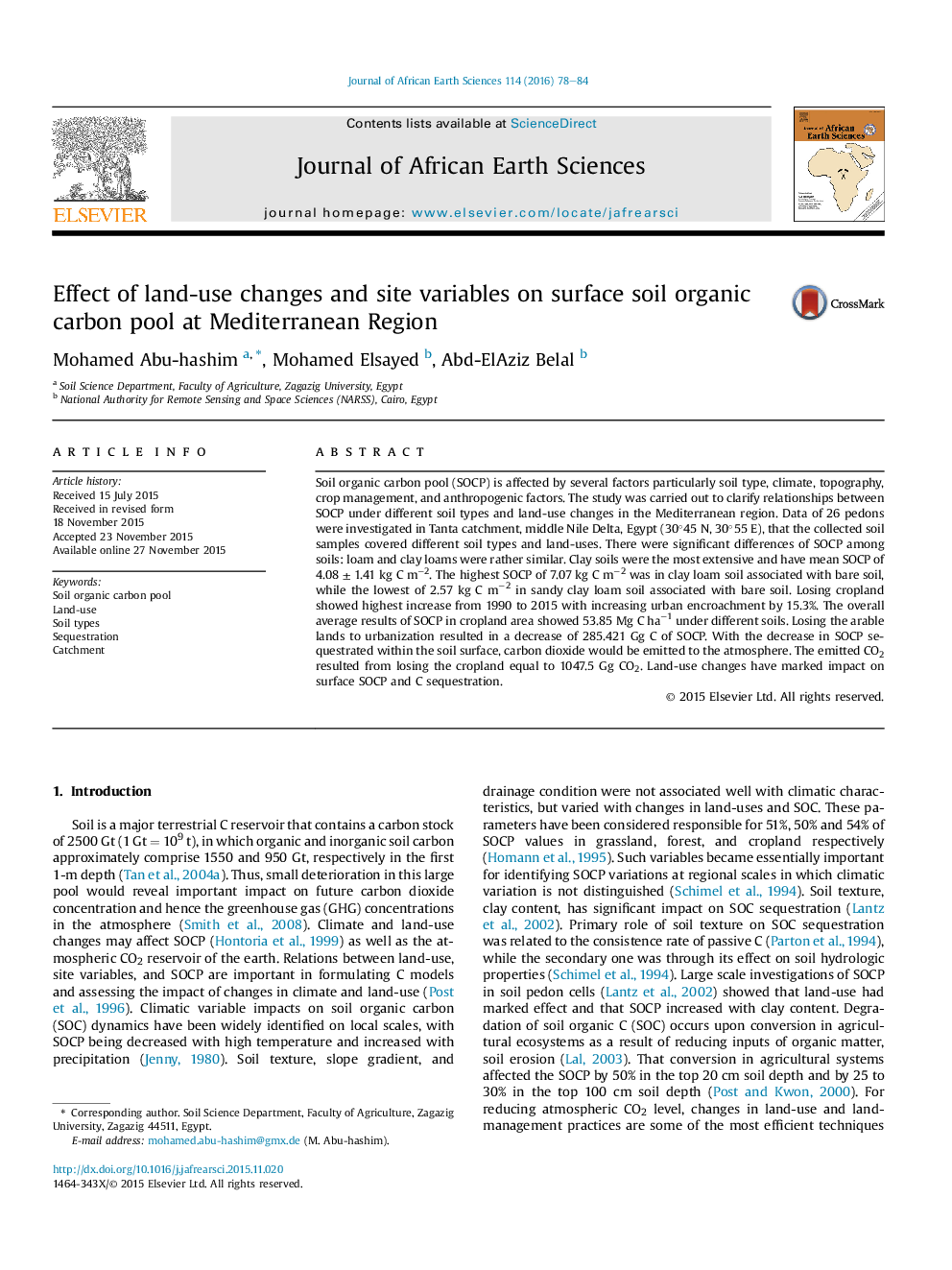| کد مقاله | کد نشریه | سال انتشار | مقاله انگلیسی | نسخه تمام متن |
|---|---|---|---|---|
| 4728462 | 1640194 | 2016 | 7 صفحه PDF | دانلود رایگان |
• We investigate impact of land-use changes and losing the arable lands on surface soil organic carbon pool.
• We identify the impact of soil types and site variables on surface soil organic sequestration.
• We used the Normalized Difference Vegetation Index (NDVI) to identify the land-use changes in the Mediterranean Region.
• We compute the emitted CO2 that results from losing the cropland and its contribution to the greenhouse gases.
Soil organic carbon pool (SOCP) is affected by several factors particularly soil type, climate, topography, crop management, and anthropogenic factors. The study was carried out to clarify relationships between SOCP under different soil types and land-use changes in the Mediterranean region. Data of 26 pedons were investigated in Tanta catchment, middle Nile Delta, Egypt (30°45 N, 30°55 E), that the collected soil samples covered different soil types and land-uses. There were significant differences of SOCP among soils: loam and clay loams were rather similar. Clay soils were the most extensive and have mean SOCP of 4.08 ± 1.41 kg C m−2. The highest SOCP of 7.07 kg C m−2 was in clay loam soil associated with bare soil, while the lowest of 2.57 kg C m−2 in sandy clay loam soil associated with bare soil. Losing cropland showed highest increase from 1990 to 2015 with increasing urban encroachment by 15.3%. The overall average results of SOCP in cropland area showed 53.85 Mg C ha−1 under different soils. Losing the arable lands to urbanization resulted in a decrease of 285.421 Gg C of SOCP. With the decrease in SOCP sequestrated within the soil surface, carbon dioxide would be emitted to the atmosphere. The emitted CO2 resulted from losing the cropland equal to 1047.5 Gg CO2. Land-use changes have marked impact on surface SOCP and C sequestration.
Journal: Journal of African Earth Sciences - Volume 114, February 2016, Pages 78–84
